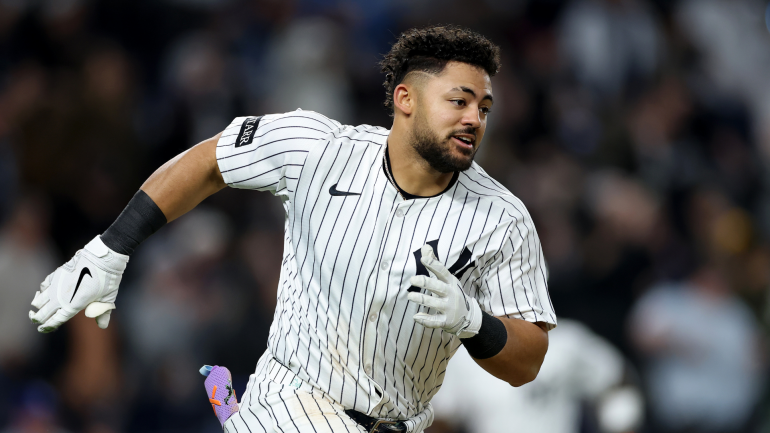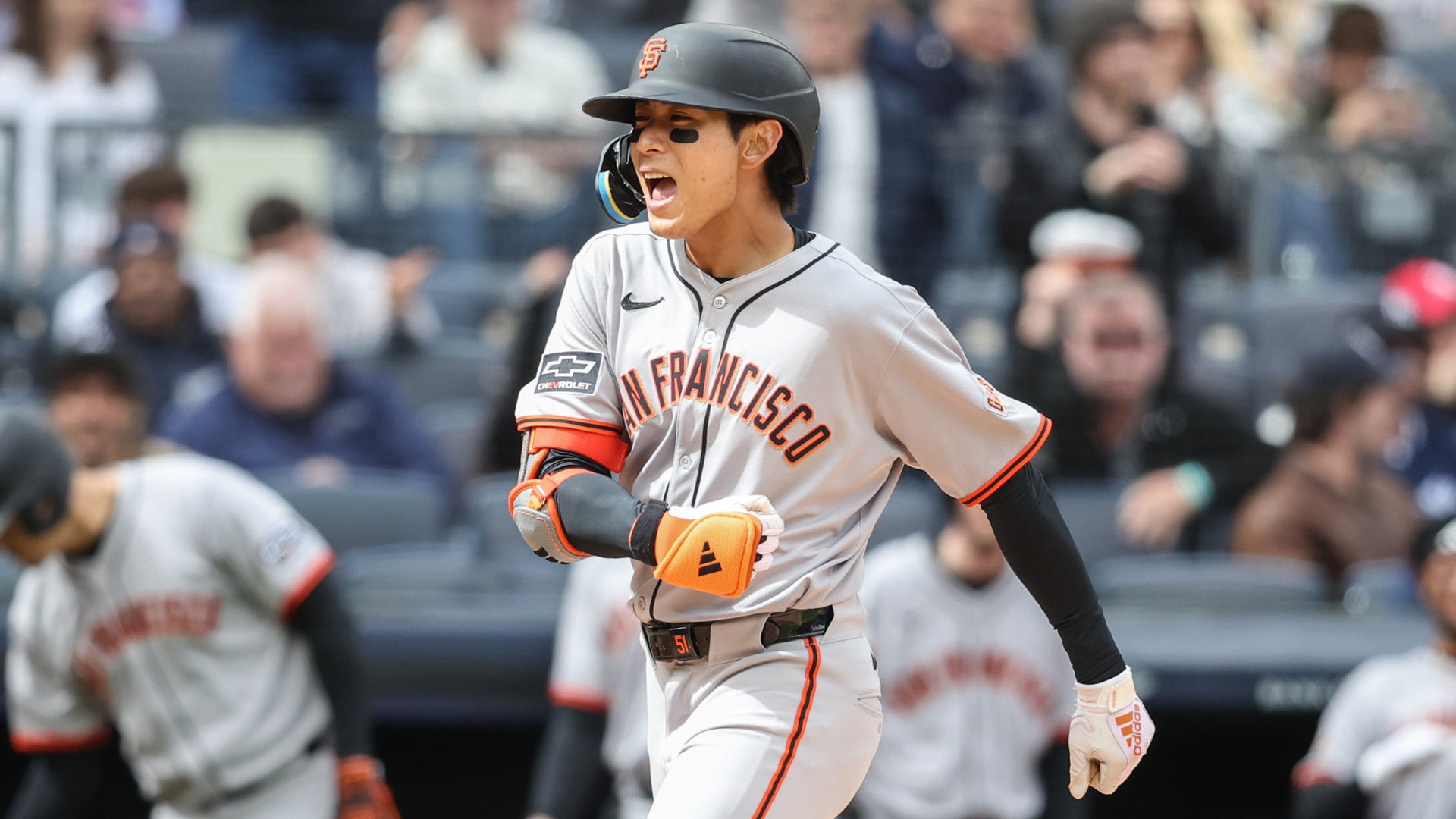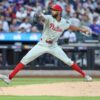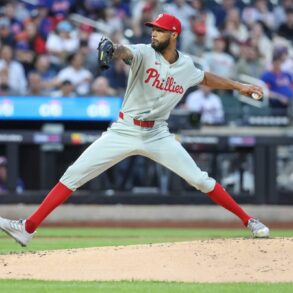
Major League Baseball’s season is nearly a month old, making this the opportune time to take inventory. Throughout the week, CBS Sports is dissecting the first four weeks of the season from a variety of angles.
In this particular piece, I’ve keyed in on 10 rookies — either because of their pedigree or their performance to date — and provided some thoughts about them, their years to date, and their paths forward.
Please bear in mind that there are more than 10 interesting rookies across the league, and that it’s not some grand conspiracy if your team isn’t represented below.

With that out of the way, let’s get to it.
1. Kristian Campbell, 2B, Red Sox
Over the winter, I ranked Campbell as the third-best prospect in baseball after he authored the biggest breakout of the 2024 minor-league season.
It’s early, but third certainly looks like an underrank on my part — by at least one spot, and perhaps two, depending on how you feel about fellow Red Sox youngster Roman Anthony. That’s because Campbell has taken quickly to the majors after cracking the Opening Day roster. He’s reliably barreling balls and commanding the zone, resulting in contributions across all three of the triple-slash categories. He’s also pulling the ball in the air at a good clip, allowing him to tie two other players featured in here (Cam Smith and Kameron Misner) for the rookie lead in home runs.
If there’s a nit to pick with Campbell it’s been his defense. The Red Sox have mostly had him stationed at the keystone, but there’s a reason they experimented with him around the diamond during his minor-league days. That established, I think Boston is more than willing to live with his glove provided he continues to torment big-league pitchers at the plate.
Whereas Campbell is more than justifying his preseason prospect list placement, my decision to put Crews at No. 2 looks … well, not so great in retrospect. He’s been the worst-performing regular by OPS+ in a Nationals lineup that ranks in the bottom half of the majors in runs scored.
Crews isn’t sitting below the Mendoza line so much as he’s laying there, comfortably, with a putrid strikeout-to-walk ratio and a barebones ISO. I suppose it’s good news that his expected ball-tracking metrics suggest he deserves better outcomes than he’s experienced, but that’s a cold comfort given his actual output and some underlying worries (like how he’s only displayed power on elevated pitches away, and how he’s whiffed on 45% of the changeups/splitters he’s seen to date).
Still, I do think it’s worth pointing out that Crews has hit some balls on the screws only to have nothing to show for it. You don’t have to take my word for it, either. TruMedia keeps count of this concept, “hard outs,” that … well, you can probably divine the intent based on the name. Anyway, Crews has already racked up 10 “hard outs,” putting him near the top of the National League.
That isn’t to suggest everything is fine and dandy with Crews’ game. Clearly there’s progress to be made in a few areas. I do think that the vibes around him would be a little different if, say, he had hit some of these balls a few feet further this or that way.
3. Jasson Domínguez, OF, Yankees
Domínguez is a switch-hitter, but only in a nominal sense. He’s reliably performed much better against right-handed pitching than their left-handed counterparts throughout his career. Predictably, that same trend is playing out this season, with the difference between the sides sinking his overall numbers.
To wit, take a look Domínguez’s key metrics broken down by his batting side:
| As a … | PA | OPS | EV | Contact% |
|---|---|---|---|---|
|
Lefty batter |
42 |
.868 |
90.9 mph |
73.6% |
|
Righty batter |
32 |
.404 |
80.6 mph |
66.2% |
The Yankees can afford to allow Domínguez more time to develop (and/or regress statistically) as a right-handed batter if they so desire. That said, I do wonder, should his overall career pattern hold the rest of the season, if they’ll take to pairing him with a dance partner as October nears — and, at what point they consider having him drop the right-handed batting entirely.
Sasaki is in an awkward spot. His success in Japan and his status as a priority free agent demands that he perform at a high level. At the same time, it’s understandable if his rookie season features its share of inconsistency. He is, after all, a 23-year-old adjusting to a new ball, a new league, and a new country … all the while needing to make some clear adjustments to his arsenal.
On that last note, Sasaki’s four-seam fastball has validated the concerns about its dead-zone properties — essentially, that it breaks the same amount vertically and horizontally, making it easier for batters to track. Opponents are hitting only .244 against the pitch, but that comes with a nearly 90% contact rate and with some poor deserved metrics. It’s also worth pointing out that Sasaki’s fastball doesn’t grade so well in the eyes of the pitch-quality models.
That doesn’t mean Sasaki is overrated or incapable of living up to the hype. The Dodgers are as good as any organization in the sport at player development, and it stands to reason that they’re going to help Sasaki figure out a fix to his heater issues. For now, though, he’s just more of a work in progress than, say, Yoshinobu Yamamoto was this time a year ago.
5. Cam Smith, OF, Astros
Slicing and dicing a small sample into an even smaller sample is relatively dangerous business. Oftentimes, you’re not stumbling upon a real sign of progress or decay so much as you’re forcing a preconceived narrative onto the data. In a few months, though, maybe this past week can become validated as the turning point of Smith’s season.
Smith’s strikeout-to-walk ratio remains ugly for a potential middle-of-the-order fixture, but he’s mostly minding the zone and the walks ought to come sooner than later. Additionally, he’s recorded two of his three hardest-hit balls of the season in the past week (including a 108 mph home run against the Padres), suggesting that he’s starting to find the barrel more often. All anyone can do is wait and see, even if it does appear to these eyes that the arrow is beginning to point in the right direction.
Even if this isn’t the beginning of Smith settling in at the big-league level, it’s worth having patience. Remember, a year ago he was suiting up for Florida State University.
Jobe is a riddle. How can someone with quantifiably good stuff have such trouble missing bats? (For context: his in-zone contact rate is worse than Carlos Carrasco‘s.) The popular explanations right now have to do with a predictable delivery and/or an ordinary release point. Whatever the case, Jobe’s inability to dodge lumber casts his shiny ERA in a different light, making him an interesting case study in the process. That’s especially true when you consider that he’s not exactly evading barrels and controlling the quality of contact he’s surrendering, either, as evidenced by his worse-than-average hard hit percentage. Stay tuned on this one. It could end up going either way.
Ever wondered what would happen if a player were wholly dependent upon their batting average on balls in play? Wilson’s season gets close to the answer. He’s yet to walk, he’s struck out only a few times, and he’s cleared the fences twice. Otherwise, his fate is being decided by whether or not he’s hitting them where they ain’t.
There’s no denying Wilson’s penchant for squaring-up pitches, but his skill set is so narrow that I think it remains fair to wonder if this is going to work. Remember, he struggled last year in his introduction to the majors, and that was both in a larger sample and with a healthier walk rate. History shows that it’s tough to reliably convert 34% of your batted balls into hits (Luis Arraez‘s career BABIP is .336 for reference), and while Wilson may prove to be an outlier in that respect, the jury ought to remain out for at least a little longer.
Through three starts, Dollander has served up more home runs (eight) than any qualified starting pitcher. (Cleveland’s Tanner Bibee led the way with seven.) The main problem has been his upper-90s fastball. The pitch features minimal separation between its vertical and horizontal break, making it easier for batters to track visually. Hitters have done more than track Dollander’s heater: they’ve thwacked it, launching seven long balls against the pitch. His cutter/slider and curveball have been the superior offerings to date, and sooner than later he might want to consider chucking his four-seamer less often (53.6% usage rate) and lean more on those pitches instead.
Rocker is the most famous player in this article: a multi-time first-round draftee who, during his time at Vanderbilt, authored one of the best college careers in recent memory. I’ve been lower than others on his chances of becoming a front-of-the-rotation starter on account of a few factors, particularly his dead-zone fastball shape, his thin arsenal, and his command profile.
To his credit, Rocker has attempted to alleviate the first and second concerns by prioritizing his signature slider and incorporating a sinker. Unfortunately, those tweaks haven’t led to sterling results. He’s failed to complete four innings of work twice in his first four starts, and his fastballs have combined to allow a .396 batting average with just a 7.3% whiff rate. Rocker’s slider continues to live up to its billing, but I think he’s going to remain inconsistent until he figures out his fastball situation.
10. Kameron Misner, OF, Rays
Misner, who entered Sunday tied atop the rookie home-run leaderboard, was not included on any of my offseason lists because of his extreme contact woes. (He struck out in more than 29% of his Triple-A plate appearances alone.) It’s encouraging, then, that he’s kept his K rate in check so far this season, albeit while still featuring one of the 20 longest swings in the majors. He was a top-40 pick once upon a time for a reason: he has above-average strength and speed, and he’s more than willing to accept his walks.
While I’d like to see more from Misner before I buy in wholly, I do think there are two variables at play that give him favorable odds at continuing to beat my previous expectations: 1) manager Kevin Cash has wisely limited his exposure to southpaws (and therefore breaking pitches); 2) his pull-happy tendencies make him an obvious candidate to benefit from Tampa Bay’s season-long residency stay at Steinbrenner Field. Whatever happens the rest of the way, Misner has already made his impression on the Rays season.
This post was originally published on this site be sure to check out more of their content.







